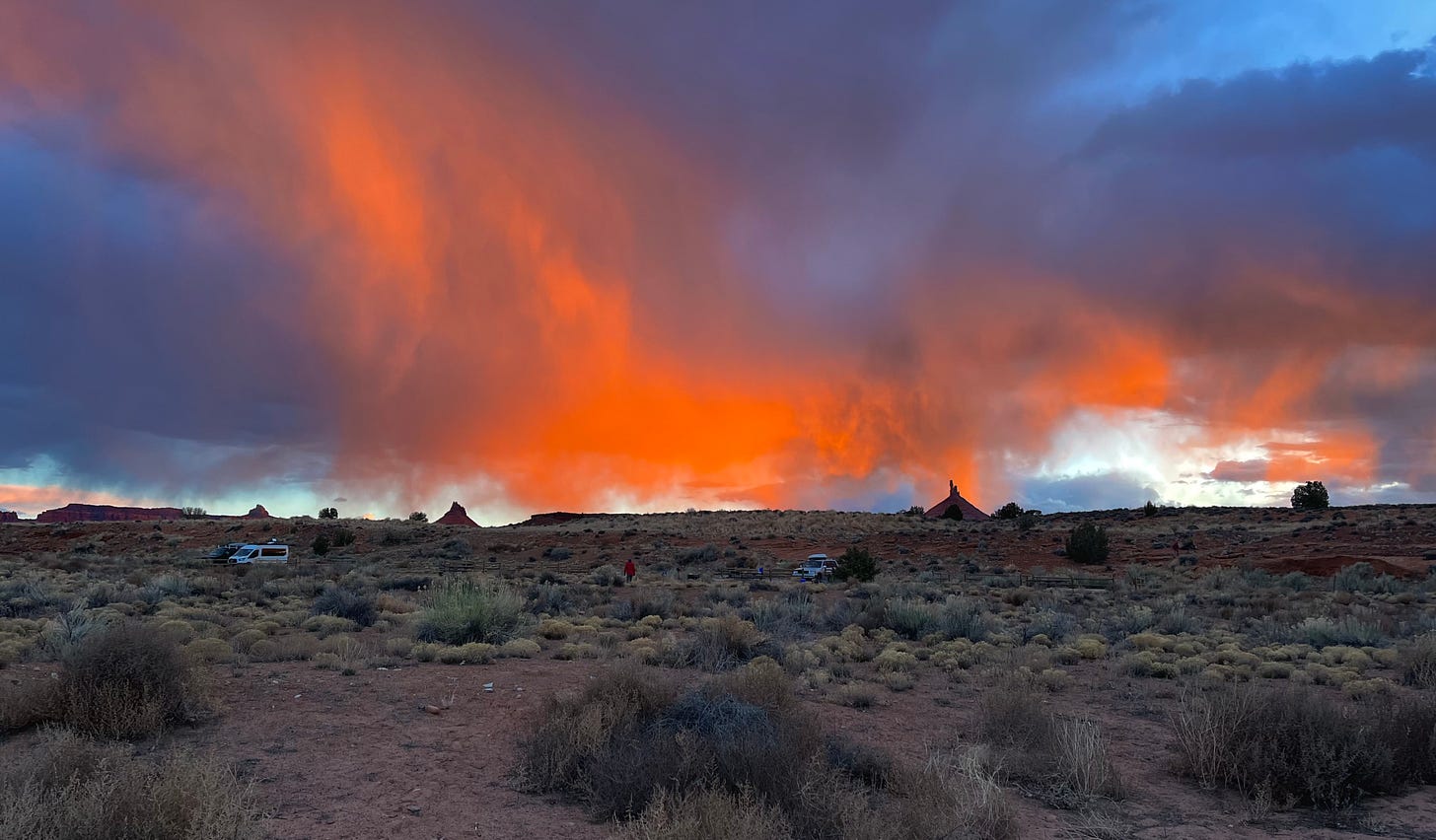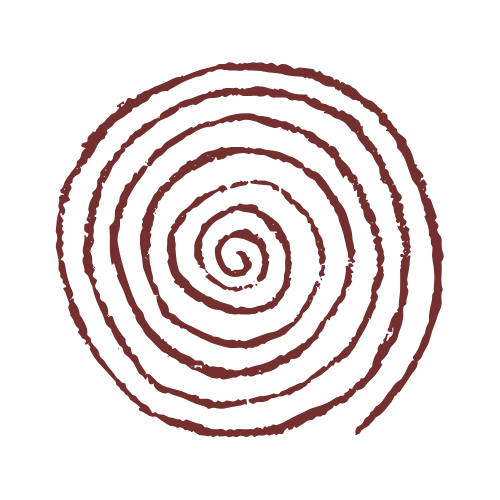Is It Even Possible to Make a Decision Without Self-Abandoning?
Why decisions feel so hard and what your body might be trying to tell you.
At The Body Knows, we’re trading self-improvement for self-trust, and rooting personal development in collective liberation. Subscribe to receive a post in your inbox every week. And give this post a ♥️ or 🔁 to help our message spread!
The other day I caught myself trying to “figure it out”... again. You know the drill. Pros and cons list. Replaying conversations. Asking friends what they’d do. Desperately trying to track the “right” choice through a storm of contradictory feelings and thoughts.
But the more I tried to think my way to clarity, the more tangled I felt.
Until something in me paused and I heard this small, gentle whisper from somewhere deeper: “What if it’s not either/or? What if it’s both-and?”
Cue the exhale.
When All of You Agrees to Disagree
The tension didn’t completely vanish, but something in me softened. My whole system relaxed because it realized it didn't have to pick a freaking side in this civil war I'd been waging inside.
It wasn't an answer exactly—definitely not the type I'd been polling my friends about, but it was the first thing all of me could agree on. The control freak and the wild child, the pragmatist and the dreamer, all nodding together at the same table.
We tend to jump straight to “I have to figure out the right decision,” without ever asking why it’s so hard to choose in the first place. But of course it’s hard—because different parts of us want different things. These parts value different things and so they’re advocating for different outcomes.
Because if I'm being honest, one part of me wants to keep everyone around me comfortable while another part is burning to speak out for what I believe, consequences be damned. One part is fiercely protective of my safety and stability while another is itching to chase the wild, lowkey reckless dream that tastes like freedom and pleasure had a baby and named it Holy Hell Yes. And yet another part clings to the known for its safety and predictability while a totally different one is stretching at the seams, hungry for the growth that only discomfort can deliver.
Wholeness doesn’t come from picking sides—it comes from letting every part inside us have a voice and be seen in its truth.
When we stop silencing the parts that “complicate” the story, we begin to feel something honest and true take shape. Not clean, not easy, but real. And in that realness, the tension softens. Not because we've figured it all out (spoiler alert: we never do), but because we're finally allowing the complexity that's been there all along.
Why We Chase Answers That Don't Exist
I grew up believing that certainty is safety and strength. Right or wrong. Stay or go. Choose. Commit. Don’t look back.
Binary thinking gives the illusion of control. It’s tidy. It’s fast. It helps us feel like we’re doing something, even if that something slices us in half. We cling to either/or because it makes the world feel simpler, smaller, less overwhelming. It promises us that there’s a “right” answer out there; if we just look hard enough, we’ll find it.
And while sometimes certainty does strike us like lightning, most of the time it’s not that simple. Because most of the time life doesn’t move in straight lines or hand out single answers. It doesn’t unfold in clear and clean binaries.
It pulses in paradox. It lives in layered truths. It hums with complexity and asks us to hold opposing feelings and outcomes at the same time.
If it were as simple as doing a math equation to come up with the “right answer”, I’m pretty sure self-help wouldn’t be a billion-dollar industry and all our socio-political problems would be marching their way to a clean resolution.
But we have all experienced the truth: being a human means feeling opposing things at the same time. Like when you’re both excited to host the gathering and also dreading the cleanup. When you’re craving change and also so overwhelmed by the idea of starting over. When you love your kid more than life itself and sometimes still fantasize about locking yourself (or them) in the bathroom for some damn peace and quiet.
What Gets Cut Off When We Choose Sides
Either/or thinking does more than fill our Notes app with pros and cons lists. To fit the binary, we have to cut off the parts of us that don’t match the story we’re trying to tell. The doubt, the daydreams, the messy gray of “sometimes I do, sometimes I don’t.” All silenced so we can be “clear” and “confident.” We put on blinders, crank up the noise-canceling, and call it clarity.
But the body knows better. The clarity we force upon ourselves often comes with tension: a tight chest, shallow breath, or indigestion. Because beneath the certainty, there’s a quiet grief—a knowing that in choosing one side, we are abandoning something essential within us.
While in school there might have been a “right answer”, inner truth rarely speaks with one voice—it’s a full chorus. Desire and fear. Grief and gratitude. A “yes” that doesn’t cancel out the “no."
So maybe it’s not actually clarity we need to be searching for, but coherence instead. But here’s an important distinction first—because this part is essential as well.
Sometimes we do know. Deep in our bones. We know it’s time to leave, time to say the thing, time to leap. And the tension we feel isn’t because we’re unclear—it’s because a part of us is scared. A part that’s still clinging to safety, approval, or old roles we’ve long outgrown. And so we hide behind the guise of “uncertainty” instead, treading water in a seemingly endless sea of confusion.
And in those moments, clarity doesn’t come from forcing that scared part to disappear. It comes from acknowledging it. Listening to it. Letting it be afraid, while still honoring the truth that’s already arrived. These moments take courage and compassion in equal measure.
Coherence Isn’t Clean, But It’s Real AF
Coherence isn’t about having one clear voice rise above the rest, it’s about letting all the voices exist without tearing each other apart. It’s when the internal chaos quiets—not because we’ve silenced anything, but because every part feels acknowledged enough to stop yelling.
It doesn’t always feel clean or decisive at first. Sometimes it’s just the moment your body exhales because all of you is finally in the same room, listening.
Coherence is an incredible feeling… eventually. At first it feels like admitting there are multiple voices in your head, and then inviting them all to tea. But with time, our parts learn they don’t have to compete for control—they can actually coexist and even collaborate.
Here are the truths that have helped me get there:
Every part of me gets a seat at the table.
Even the messy ones and especially the ones I try to hide.
Conflicting truths can coexist.
Emotional complexity is not a problem to fix.
Self-trust is built by staying, not solving.
Clarity comes through listening, not forcing.
This isn’t indecision. This is wholeness.
The drive to “figure it out” or “get it right” is often a survival response. (That’s why we ruminate, unable to relax until we’ve made a decision.) When our nervous system is overwhelmed, it grasps for answers until it lands on something, anything, that feels like control. Even if it has to drag you through three spreadsheets and a panic spiral to get there.
But both-and thinking, and the coherence it cultivates, offer a sneaky Option C: stay with discomfort without needing to fix it. Listen to it and all its parts instead.
Because I am not weak, flip-flopping, or “playing both sides” when:
I am hurt and still want to reconnect
I say no and still care deeply.
I hold my truth and still honor yours.
It’s not contradiction. It’s depth. It’s relational, interconnected, organic wisdom. It’s what real intimacy requires—with others and with ourselves.
The Peace of "And"
So next time, instead of “I love them but I need space,” what if you tried, “I love them and I need space.”
Let that one word—and—soften something inside. Let it show your nervous system there’s room for the full truth. Let your body teach you how to hold it all—without rushing, without fixing, just breathing into the reality of what’s here.
This is what self-trust looks like: not arriving at a single, certain answer, but a steady willingness to stay present and caring with all of you.
Because wholeness doesn’t ask you to choose. It invites you to expand. To hold it all in the same container. Until you discover that the peace you’ve been seeking isn’t in a clear-cut solution, but in the quiet act of letting every part of you belong.

Consider giving this post a ♥️ or 🔁 to help our message spread!






So amazing! Clear, too- I love the power of the word 'and'. I had not seen it this way before. I saw my personalities at a town hall meeting, and the common, working me (dressed in work clothes), called out the devil me for always dressing like the rest
Beautiful. Wonderful. A halcyon call to trust, and rest, in complexity and complementarity. We live in a world that so valorizes decisiveness, a world that celebrates the courageous decision-maker and denigrates the undecided as wishy-washy or fence-sitting or even cowardly. You really got me thinking about what it means to be decisive, and what it means to be indecisive. Sometimes we must decide, and fast. No doubt about that. And in those times of real urgency we have special resources to draw on. But what you have shown so well here is that often, and probably far more often than not, indecision is not a matter of something lacking. It's a gift. If only we open it up and look, our not-knowing-what-to-do is a place of abundance. Who knows what our indecision might have to give? There's only one way to find out. The next time I'm feeling indecisive (as long as the situation isn't urgent), I'm going to try to stop worrying about not knowing what to do and take a breath and look around.